Pitbulls are America’s most misunderstood dogs. Originally bred for dog fighting, these loyal and protective dogs are now owned as pets. However, Pitbulls continue to be a source of controversy in some communities.
Many people mistakenly assume that Pitbulls are a dog breed, but the term ‘pitbull’ actually includes a group of dogs: the American Staffordshire Terrier, the American Pitbull Terrier, and the American Bully.
Although they are not considered a dog breed, the most common dog types in the USA are pit bulls. They make up an estimated twenty percent of America’s doggy citizens.
This means that pit bulls are likely to breed with any other kind of dog, including bulldogs.
These mixes tend to look like pit bulls, with only subtle differences, depending on what breed of bulldog a pit bull is crossed with.
There’s a canine breed called the APBT, or American Pit Bull Terrier, but they’re still basically pitted bulls.
What is an American Bully mixed with a Pitbull?
An American Bully-Pitbull mix is an American Bully that has been bred with another type of Pitbull. These designer dogs bear traits of both the American Bully and the American Pitbull Terrier and are also referred to as Bullypits. Bullypits tend to look like pit bulls. The nose and legs may be shorter than a pit bull. Bullypits have sturdy, muscular bodies; glossy short-haired coats; semi-floppy or cropped ears; heads with slightly heart-shaped tops; and a mouth that appears to smile when open.
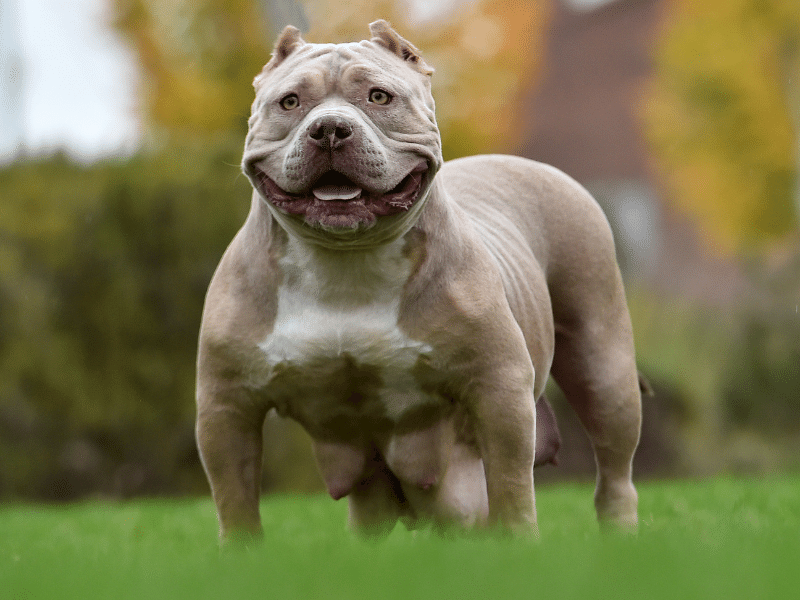
Bulldog Breeds Often Found in Pit Bull/ Bulldog Mixes
There are several bulldog breeds. These include the three most commonly used in crosses with pit bulls or American Pit Bull Terriers:
English Bulldog
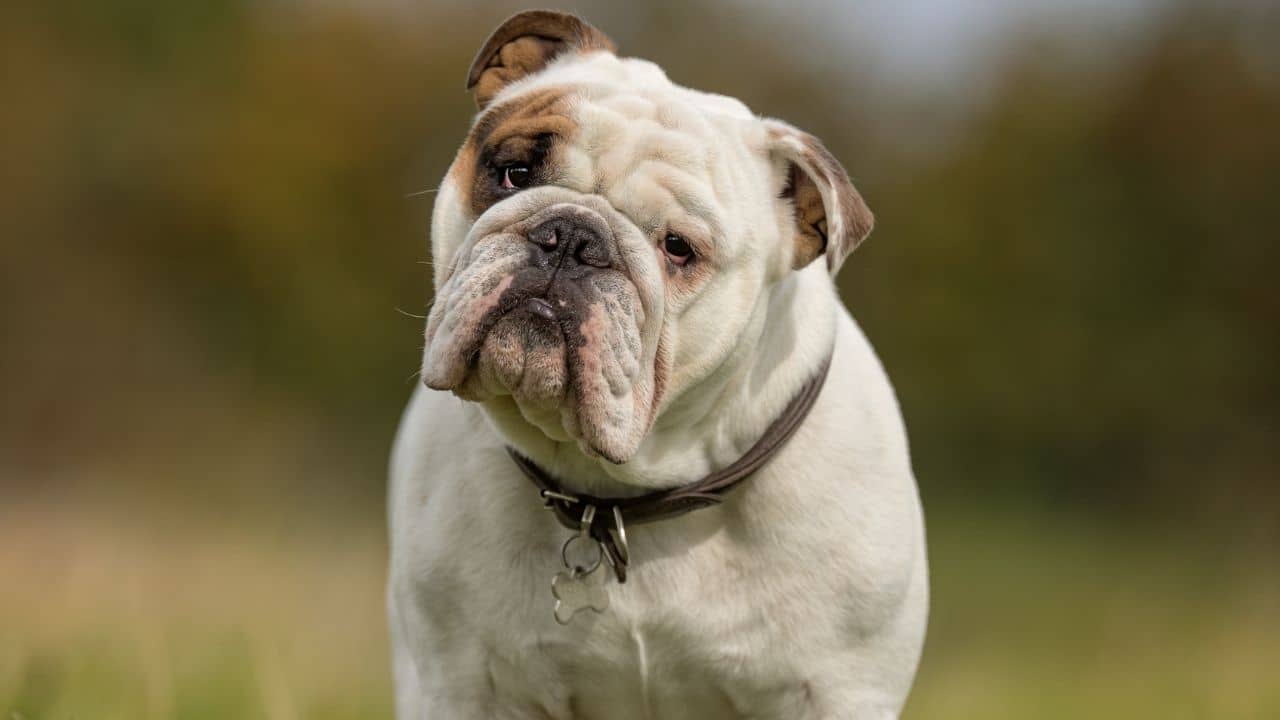
The English Bulldog is the most commonly found bulldog breed. According to the American Kennel Club, the Bulldog was created in the 13th century in England.
In America, it is the fifth most popular purebred dog.
It has an extremely pushed-in nose, lots of facial wrinkles, and looks a bit like a loaf of bread on short legs. Most of them are red and white.
Crosses with pit bulls are called a number of names, including Bullypit.
American Bulldog
This breed is nearly identical to a large pit bull in appearance. It’s mostly white, but can come in other colors, like fawn or brindle.
Crosses with pit bulls are called Bullypits.
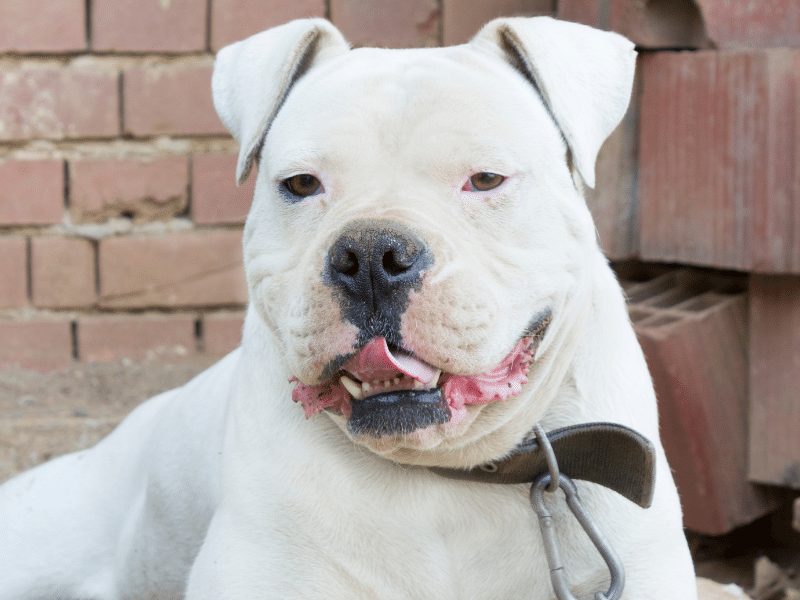
Olde English Bulldogge
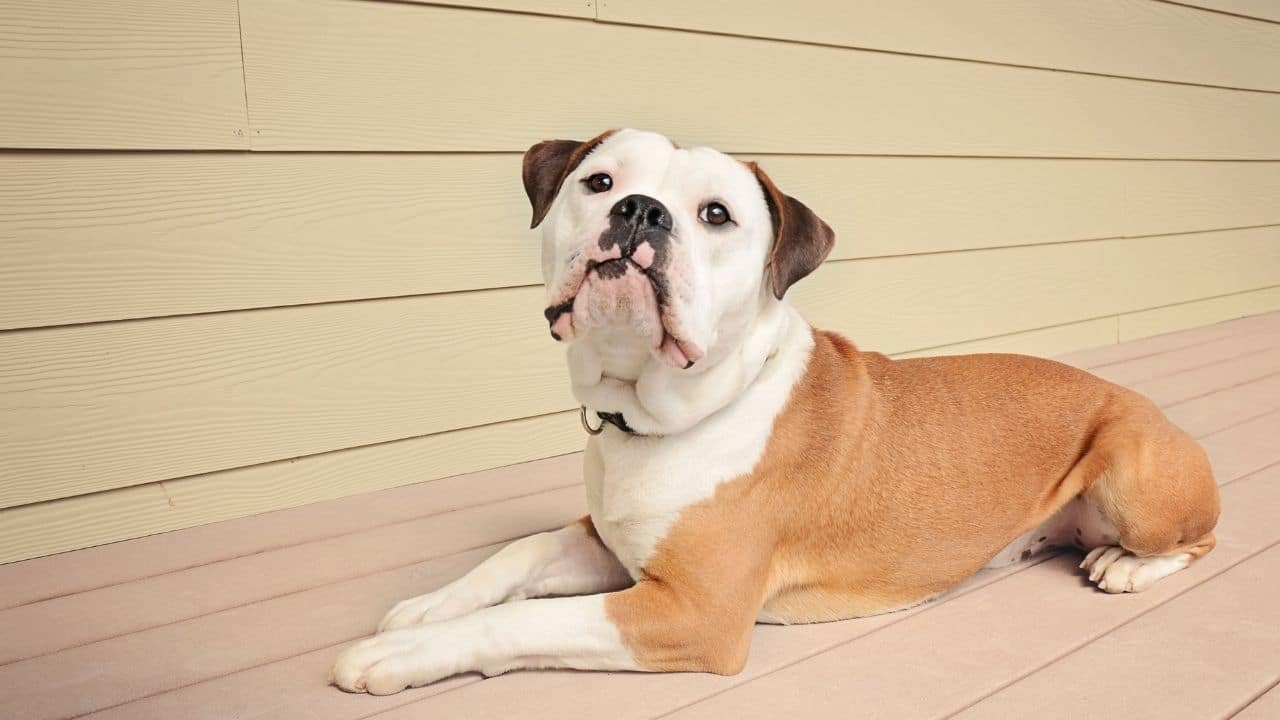
This looks like an elongated English Bulldog. As the name suggests, it resembles the bulldogs in paintings of the dog centuries ago.
Crosses with pit bulls are called Olde Pit Bulldogges.
So, why does this matter? Depending on what bulldog has been crossed with a pit bull, this can impact the mixed dog’s size, color, leg length, muzzle length, and how many facial wrinkles it has.
It also depends on what to call the mix, but since there is no general consensus about what to call each specific mix, it’s best just to call them Bullypits.
Bullypit – 11 Best Facts
American Bullies were recently recognized as a breed by the United Kennel Club (UKC) in 2013. Technically speaking, American Bullies are no longer considered Pitbulls, but they do have similar genes.
The American Bully Pitbull mix, also known as the Bully Pit, is a mixed breed that has more Pitbull characteristics.
1. Family (Breed)
The American Bully originates from the bulldog family with its ancestors being a cross between the American Bulldog, the English Bulldog, and the Old English Bulldog.
While American Bullies have more Bulldog characteristics than other Pitbull-type dogs, they are actually a crossbreed between the American Pitbull Terrier, the American Staffordshire Terrier, and the English Bulldog.
On the other hand, the American Pitbull Terrier and American Staffordshire Terrier are the classic ‘Pitbulls’ that were bred in England in the 1800s. Their ancestors were the Old English Bulldog and Terrier.
Since Bully Pits are a cross breed between the American Bully and the American Pitbull Terrier, they are primarily from the Bulldog family, but also have some Terrier genes.
2. Temperament
The Bully Pit looks fierce and is protective of its territory. However, Bully Pits are said to be very friendly, cuddly, and loving towards their owners. They can even be good around other pets if you socialize them at a young age.
Bully Pits tend to have a mind of their own, but can be trained as long as you show them that you are the pack leader. Always use reward-based non-aggressive training to discourage future aggression.
3. Intelligence
American Pitbull Terriers have an average to above-average intelligence level, whereas Bulldogs have scored extremely low on work and obedience exams. Since Bully Pits are a mixture of the two breeds, it’s safe to say that they have about average intelligence. However, some people insist that Bully Pits are intelligent and agile, just stubborn.
While you can train a Bully Pit, consistency is key as it takes them a while to learn and their trainability is based on eagerness to please their owners, rather than their intellect.
4. Bully Pit Family Dogs
Bully Pits have been nicknamed ‘Nanny dogs’ because they are so protective of children. They are also very outgoing, dependable, and eager to please, making them great family companions.
However, they are large muscular dogs who don’t always recognize their own strength. They can easily overpower a small child or another pet, such as a cat, and cause unintentional harm.
5. Health
Bully Pits are prone to the development of serious genetic conditions in their skeletal and respiratory systems. It’s recommended to pre-screen them to check for abnormalities in their elbows and hips as correcting these conditions can become very expensive.
Bully Pits and similar breeds also often experience heart disease and allergies, and are known to develop cataracts as they age.
6. Weight
Bully Pits are muscular heavy dogs that can weigh between 50 to 100 pounds, depending on how much their parents weigh.
Adult American Bullies typically weigh between 65 to 85 pounds whereas American Pitbull Terriers have a slimmer build, only weighing between 30 to 60 pounds.
Therefore, it can be difficult to determine exactly how much your Bully Pit will weigh once they reach adulthood, but it’s a safe bet to stay they’ll be relatively large.
7. Size
Bully Pits are large-sized dogs that typically stand about 21 to 25 inches tall, which is significantly taller than a full-blooded American Bully. Of course, their actual height depends on their specific genetics.
Overall, Bully Pits are considered to be relatively big, strong dogs with a stocky build and intimidating appearance, but they are surprisingly gentle, loyal, and loving.
8. Bone structure
American Bullies have a massive and muscular bone structure complete with a well-defined jaw and a large broad head. They also have a medium-sized tail, relatively short back, thick neck, and muscular hindquarters.
While Bully Pits do have some characteristics of an American Pitbull Terrier, they often closely resemble a large sized American Bully.
9. Coat/fur
Bully Pits have a short glossy coat that can either feel smooth or coarse to the touch, which means that they don’t shed very much.
Unfortunately, Bully Pits are subject to skin allergies that can leave their coats speckled with scabs and sores.
Since the coat colors of the American Pitbull Terrier range from red to black to blue, fawn, or even brindle, the coat colors of a Bully Pit are equally vast.
10. Cost of maintaining a Pitbull
After you’ve purchased a Pitbull puppy from a licensed breeder or adopted one from a shelter, the first year expenses can run you anywhere between $2720 to $8280.
This includes vaccinations, spaying/neutering, deworming, dog food and treats, a dog bed, collar, leash and chew toys. However, maintaining a Pitbull doesn’t cost much more than any other dog.
Of course, you’d need to continue to provide food and water, and your dog would need annual vet check-ups and treatment for health conditions. Aside from that, you may need to put up a fence and comply with state laws regarding Pitbull ownership.
11. Bully Pit parents
As previously stated, Pitbulls are a cross between the Old English Bulldog and Terriers, but each Pitbull is an individual with traits, characteristics, and a temperament that is reminiscent of both its parents.
Many people claim that Pitbulls are great dogs as long as you properly care for them and train them. While it’s true that Pitbulls raised by loving owners do have better temperaments, their genes also play a role in any aggressive tendencies.
The same holds true for Bully Pits. Most likely, one parent was an American Bully and the other an American Pitbull Terrier. It’s claimed that Bully Pits are relatively docile as aggressive tendencies are bred out of them.. However, they’ll still have characteristics of both parents.
Bully pit varieties
There are three main Pitbull varieties: the American Pitbull Terrier, the American Staffordshire Terrier, and the American Bully.
However, the American Bully has recently been recognized as being its own independent breed.
American Pitbull Terriers are lean, tall, and muscular with a wide range of coat colors. American Staffordshire Terriers typically have solid-colored coats and socialize better with other pets.
American Bullies are medium-sized, muscular, and stocky. Since American Bullies are actually a bulldog mix, they no longer fall into the same category as Pitbulls, despite the similarities. Bully Pits are a new, mixed breed with a wide variety of sizes and coats.
Things to know when owning a Pit Bull
First of all, not every Pitbull is aggressive. Pitbulls actually have some desired traits, including loyalty and playfulness, which is why many Pitbull owners adamantly defend the breed, claiming that it all depends on how you raise them. But you do need to account for genetics.
Pitbulls were originally bred for dog fighting, but they continue to have that instinct. While they are primarily known for attacking other animals and being fiercely loyal to their owners, there have been numerous reports of Pitbull aggression and maulings worldwide.
Some states and countries have even banned Pitbull ownership, while others have imposed restrictions. It’s important to understand your state’s laws before purchasing or adopting a Pitbull.
Pitbulls
Contrary to popular belief, Pitbulls aren’t a breed. It’s just a term used to encompass a few Pitbull-type breeds, including the American Pitbull Terrier and American Staffordshire Terrier. Occasionally, you’ll find Bull Terriers and American Bullies on the list, too.
These dogs were first bred in England in the 1800s for a popular sport known as “bull baiting.” Eventually, bull baiting was outlawed and people started “rat baiting” or dog fighting instead. The dogs were released into a “pit” for fighting, hence the name “Pitbull.”
Pitbulls had a different reputation in America, though. Early American settlers used Pitbulls to herd cattle, catch hogs, and protect their families from thieves. Although Pitbulls were bred to fight other animals, they were put to sleep if they bit the dog handlers. Thus, they are more inclined to attack other pets than humans.
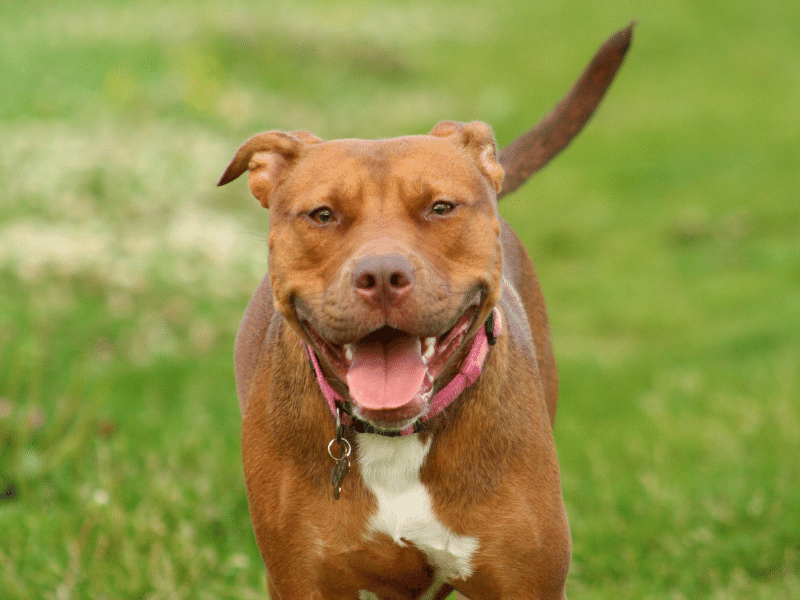
American Bully
The American Bully is a relatively new breed that wasn’t developed until the 1980s as a companion dog. Although it closely resembles other Pitbull-type dogs, the American Bully technically isn’t a Pitbull.
This mean-looking, but loving family dog is a mixture of the American Bulldog, English Bulldog, and Old English Bulldog. Its aggressive tendencies were intentionally bred out, making the American Bully a friendly and docile pet that’s excellent with children.
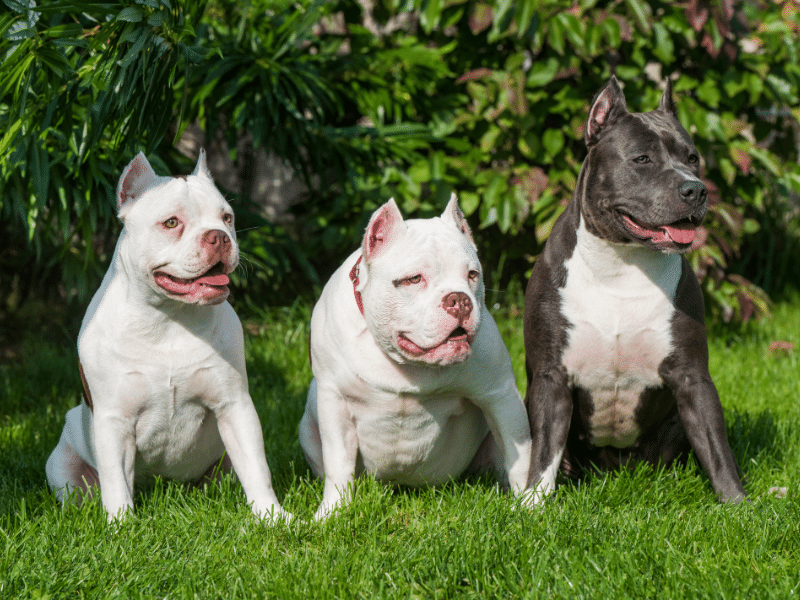
American Pitbull Terrier
American Pitbull Terriers are tall, lean, short-haired dogs with a vast array of coat colors. Although they were originally crossbred from Old English Bulldogs and Terriers, they are now considered to be purebred dogs.
When you hear the word “pitbull,” the American Pitbull Terrier is the dog that most commonly comes to mind. While they do have aggressive tendencies, they were also once used as farm and nanny dogs. They are extremely loyal, courageous, agile, and full of energy.
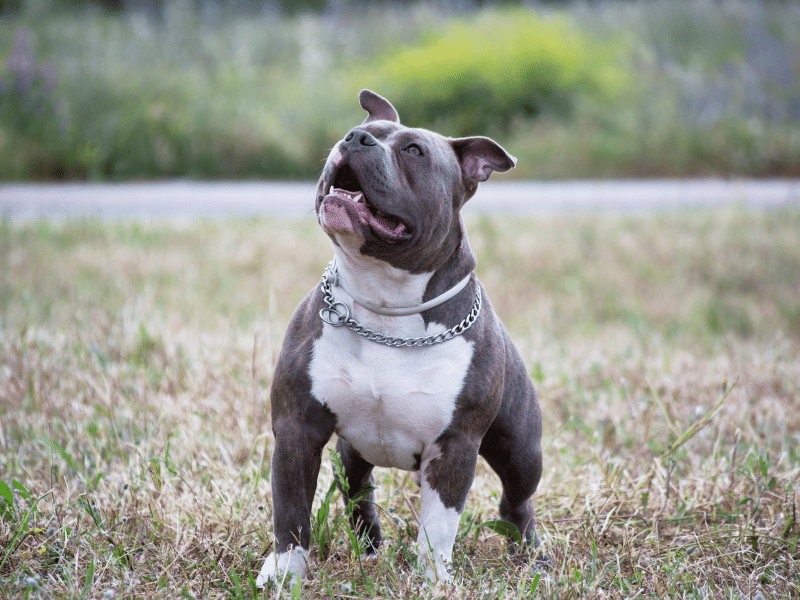
American Staffordshire Terrier
The American Staffordshire Terrier is amongst the few Pitbull-type dog breeds that are recognized by the American Kennel Club (AKC). They are said to be confident, smart, and trustworthy companions despite their rap for technically being Pitbulls.
These dogs also originated in England and were used for bull baiting and dog fighting. However, they came to the US with European immigrants and became a bona fide dog breed in 1936.
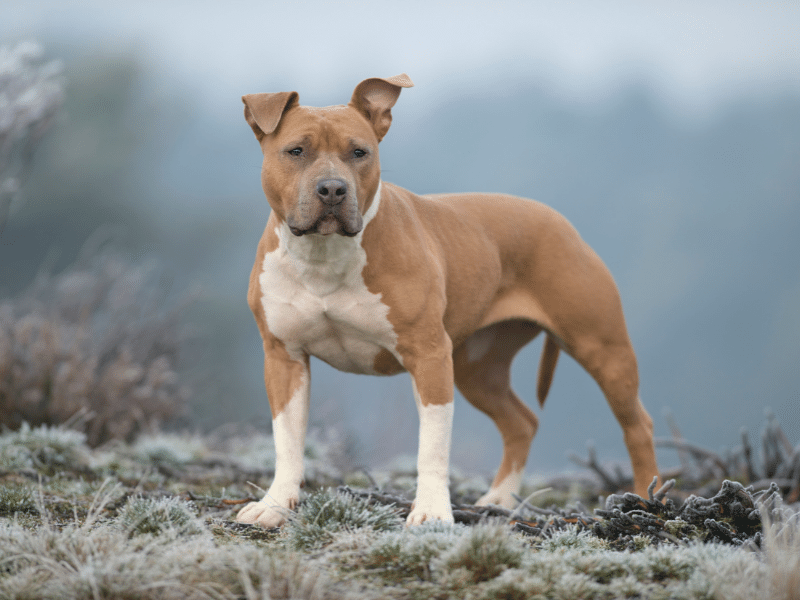
Boston Terrier
Boston Terriers closely resemble Pitbulls and have a similar genetic makeup. Originating in Boston, Massachusetts, Boston Terriers are a cross breed of the English Bulldog and White English Terrier. This beloved family pet was officially recognized as a breed in 1893.
Boston Terriers are small, affectionate companion dogs that are excellent with children. Recently, Boston Terriers have started being crossbred with the American Pitbull Terrier, creating the Boston Pit.
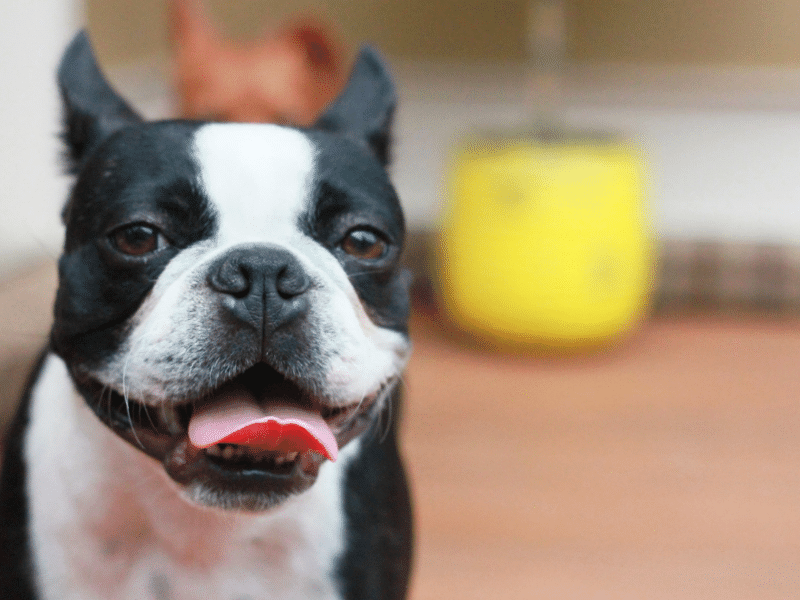
Bully Pit traits
Bully Pits are less aggressive than most Pitbulls and are known for being excellent companion dogs. They are easygoing, mild-mannered and playful. They’re also very protective of their owners, but love people- for the most part.
Even if a Bully Pit is the friendliest dog in the world, its large, stocky, muscular build will naturally scare away intruders. They are extremely confident and self-assured, so you need to be consistent and firm in training.
Bully Pits are very active dogs that need plenty of exercises. Many enjoy playing games, such as Frisbee, fetch, and tug of war. They need a large outdoor yard and plenty of interaction or they may end up chewing your furniture purely out of boredom.
Bully Pit female
If you’re interested in adopting a Bully Pit, but are concerned about its size and strength, the solution is to adopt a female.
Female Bully Pits have the same appearance, personality traits, and temperament as males except that they are much smaller in size. Male Bully Pits can be twice the size of females, so you may want to adopt a female if you have children or other pets.
Aside from that, females are just as friendly as their male counterparts. If she becomes pregnant, you can expect to help care for a litter of 4 to 8 adorable chubby puppies.
Bully Pit pups
Bully pit pups are adorable, to say the least. The average sized litter is between 4 to 8 pups. However, Bully Pits aren’t a recognized dog breed, so it’s recommended to have your female spayed instead of attempting to breed her.
If your female Bully Pit does become pregnant, you’ll need to prepare to help her care for the puppies. First, either the mother will chew away the umbilical cords or you can cut them off. Afterwards, the puppies will need to nurse immediately and continue to do so every two hours.
The mother will lick the puppies to clean them and encourage them to use the restroom. If she’s not doing this, then you should rub a warm washcloth on them after every feeding to encourage them to go. After two weeks, the puppies will start to open their eyes and walk around, but they’ll still need to nurse until they’re six weeks old.
Bully Pit black
American Pitbull Terriers with an all-black coat aren’t considered to be a separate breed. The same goes for Black Bully Pits. Since American Pitbull Terriers come with so many different colored coats, there’s also a wide variety of the colors of Bully Pits.
However, some people naturally look for dogs of a specific color, which can increase the dog’s value. While some prefer red-nose Pitbulls, others want a blue Pitbull for whatever reason. All-black American Pitbull Terriers aren’t uncommon, but many people are willing to pay top dollar because they are believed to be rare.
Fortunately, if you are specifically looking for an all-black Bully Pit, they aren’t too hard to find. All-black American bullies are relatively common, so all you need to do is find a litter with the right set of parent dogs.
Bully Pit XL
When you hear the term Bully Pit XL, it’s only natural for you to think that it’s in reference to an especially large Bully Pit. However, American Bully XL is just another name for the American Bully Pitbull mix, aka the Bully Pit.
Bully Pits have also been called Monster Bullies or Gentle Giants due to having an incredible level of strength and monstrous size, but a very calm and friendly demeanor.
American Bullies actually come in four varieties that are based on their size: Pocket, Standard, Classic, and the infamous American Bully XL. So, if you’re considering welcoming a Bully Pit into your family and a breeder mentions the American Bully XL, you’re both talking about the same dog.
Bully Pit price
You can expect to pay anywhere from $2,000 to $10,000 when you purchase a Bully Pit from a reputable breeder. Actual prices and additional fees vary depending on your breeder and the quality of the breeding services.
If that sounds like a hefty price, you may be relieved to learn that you can buy a Bully Pit for as little as $500 to $800 if the dog’s bloodline isn’t fully known or it’s not a purebred Bully Pit. However, it will be harder to determine the dog’s temperament.
Alternatively, you could adopt a Bully Pit from your local animal shelter for under $500 provided they have one available for adoption. Sadly, pit bulls often end up at local animal shelters and are frequently put to sleep due to shelter overcrowding. If you’re lucky enough to find a Bully Pit at your local shelter, adoption may very well save the dog’s life.
Bully Pit for sale
If you’ve decided that a Bully Pit is the right dog for you, then it’s time to start reaching out to reputable breeders in your area. Finding a breeder that specializes in American Bullies or Bully Pits isn’t much of a challenge.
When trying to find the right breeder, it’s best to look at consumer ratings, visit dog shows, and ask for recommendations. It’s also advisable to select a breeder that is registered with the United Kennel Club (UKC), the American Kennel Club (AKC), or another dog breeding registry.
However, many registries still don’t officially consider American Pitbull Terriers and American Bullies to be independent dog breeds, so many good breeders may not be listed on their registries.
You can also look for awards and titles or ask prospective breeders for a reference. Always check out the breeding environment before investing in the dog.
Here are a few highly rated breeders that you may want to look into as you start the search for a new addition to your family:
Bullypit Physical Characteristics
Each dog is different. Even dogs in the same litter can vary greatly in size, color, and conformation.
Because Bullypits is not a recognized breed, they do not have as many predictable physical characteristics as purebred dogs do. However, most pit bull mixes tend to look like variations on the pit bull theme.
Jacque Lynne Shultz, the Director of Special Projects for the ASPCA, gives guidelines for shelter workers and potential adopters of dogs about how to recognize a pit bull mix like a Bullypit.
Look for:
- Short-haired coats, which shine when the dog is in good health.
- A blocky build, with wide chests, a thick, square jaw, and skull.
- A mouth that seems to smile when it is open.
- A head with a small indentation in the center, making it appear like the top of a Valentine’s heart.
- Unless they have been cropped by a past owner, their ears naturally hang in a semi-floppy or slightly crooked way.
- Colors can be any in the canine rainbow, including having more than one color. Many pit bull mixes have white on them somewhere.
- Weight can be anywhere from 30 to 100 pounds.
- Height from the bottoms of their feet to the top of their shoulders averages about 25 inches.
If you are thinking of adopting a pit bull mix with cropped ears and do not know the dog’s past history, take it for granted that the dog was somehow mixed up with a dogfighting ring.
Dogs bred for fighting had their ears cropped so another dog couldn’t grab hold of them. It also made the dogs look tougher.
About Recognized Breeds and Pure Breeds
Mixed breed dogs are generally not recognized by dog breed registries. The APBT and American Bulldog cross is a recognized breed only by registries devoted to mixed breeds, such as the Designer Dog Registry and the American Canine Hybrid Club.
America’s most popular dog breed registry, the American Kennel Club, frowns on pit bulls or pit bull crosses because they do not want to be associated with dogfighting.
Dog registries and dog shows only want to deal with purebred dogs. These dogs predictably meet a strict physical requirement called a breed standard.
In order to show dogs, each dog is compared to how close it comes to matching the breed standard. The dog closest to the standard wins.
Since mixed breeds lack breed standards, they cannot be shown in dog shows.
Even if they can’t win trophies in the show ring, mixed breeds like Bullypits make great pets, as long as they are trained well. They also make good watchdogs.
Bullypits can do everything from being large lap dogs, to watchdogs, to being therapy dogs.
Frequently Asked Questions About How Does a Pitbull Bulldog Mix Look Like
Does a Pit Bull Bulldog Mix Look Like a Pit Bull?
How Do I Identify My Pit Bull Mix?
Is There Any Indication If My Pit Bull Bulldog Mix Has Locking Jaws?
What is the best Pitbull mix?
What two dogs make a bully?
What is the life expectancy of a Bully Pit?
What two breeds make an American Bully?
Conclusion About The Bullypit
The Bullypit is another name for a pitbull mixed with an American Bulldog and the American Pit Bull Terrier.
Sources:
American Kennel Club Bulldog
National Library of Medicine Small Animal Veterinarians’ Perceptions, Experiences, and Views of Common Dog Breeds, Dog Aggression, and Breed-Specific Laws in the United States
Pitbullinfo.org “PITBULLS” ARE 20% OF DOGS IN THE U.S.
United Kennel Club (UKC) American Bully


